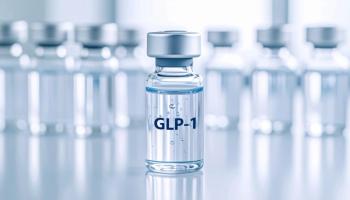
Lung Cancer Combination Therapy Shows Promise
Durvalumab and tremelimumab demonstrated antitumor activity in patients with non-small cell lung cancer regardless of PD-L1 status.
Patients with advanced non—small cell lung cancer (NSCLC) receiving the combination checkpoint blockade with the PD-L1 inhibitor durvalumab and the anti–CTLA-4 agent tremelimumab had a response rate of 23%, according to phase Ib data from Study 006 published in The Lancet Oncology.
Study 006 was an open-label, nonrandomized trial that enrolled immunotherapy-naïve patients with locally advanced or metastatic NSCLC. Patients were accepted regardless of NSCLC histology. Responses in the study were observed regardless of PD-L1 status. The company developing the agents, AstraZeneca, has launched phase III trials examining the durvalumab/tremelimumab combination in the first-line NSCLC setting.
“Combination therapy with durvalumab and tremelimumab demonstrated antitumor activity in patients with NSCLC regardless of PD-L1 status, including in patients with no evidence of tumor cell membrane PD-L1 staining,” said lead author, Scott J. Antonia, MD, PhD, chair of the Department of Thoracic Oncology, Moffitt Cancer Center, in a statement. “The results suggest that this combination has potential as a treatment option for patients with PD-L1—negative tumors whose needs are not addressed by currently available therapies, including immunotherapies.”
Between October 2013 and April 2015, 102 patients aged ≥18 years were enrolled and treated in the dose-escalation phase of the trial. The cutoff date for the data analysis was June 1, 2015. Researchers are still conducting the dose-expansion phase of the trial. Durvalumab was administered at 3 mg/kg, 10 mg/kg, 15 mg/kg, or 20 mg/kg every 4 weeks for 13 cycles, or 10 mg/kg every 2 weeks for 26 cycles.
Patients received tremelimumab at 1 mg/kg, 3 mg/kg, or 10 mg/kg every 4 weeks for 6 cycles, then every 12 weeks for 3 cycles. Based on the results, the regimen selected for the ongoing phase III studies of the combination was 20 mg/kg of durvalumab plus 1 mg/kg of tremelimumab every 4 weeks. In a cohort of 26 patients who received a regimen of 10 to 20 mg/kg of durvalumab and 1 mg/kg of tremelimumab, the overall response rate (ORR) at a median follow-up of 18.8 weeks was 23% (n = 6; 95% CI, 9-44). The ORR was 22% (n = 2; 95% CI, 3-60) among 9 PD-L1—positive patients.
The ORR was 29% (n = 4; 95% CI, 8-58) among 14 PD-L1—negative patients, including 4 of 10 patients with no PD-L1 staining. In the overall 102-patient study population, the most common grade 3/4 adverse events (AEs) included diarrhea (11%), colitis (9%), and increased lipase (8%). Serious AEs occurred in 36% of patients and 29 (28%) patients discontinued treatment due to AEs.
During the study, there were 22 patient deaths, 3 of which were treatment related. The 3 deaths were due to complications related to myasthenia gravis, pericardial effusion, and neuromuscular disorder.
“The newly published data are an important milestone in our scientific understanding of the patient population likely to achieve the greatest benefit from the combination of durvalumab and tremelimumab. The latest findings reinforce our belief that the combination strategy we are pursuing is key to the future success of immuno-oncology treatment,” Ed Bradley, MD, senior vice president of Oncology at MedImmune, a subsidiary of AstraZeneca, said in a statement.
The ongoing multicenter, global, randomized, open-label phase III MYSTIC study (NCT02453282) is examining the combination in the frontline setting for patients with EGFR/ALK wild-type advanced or metastatic NSCLC. Patients will be randomized in a 1:1:1 ratio to durvalumab (20 mg/kg every 4 weeks) with or without tremelimumab (1 mg/kg every 4 weeks) or standard chemotherapy. The primary outcome measure is progression-free survival.
Another ongoing open-label phase III study, the NEPTUNE trial (NCT02542293), is randomizing patients in a 1:1 ratio to the durvalumab/tremelimumab regimen at the same doses as the MYSTIC trial or standard chemotherapy. The primary endpoint for this trial is overall survival.
Newsletter
Stay informed on drug updates, treatment guidelines, and pharmacy practice trends—subscribe to Pharmacy Times for weekly clinical insights.

















































































































































































































